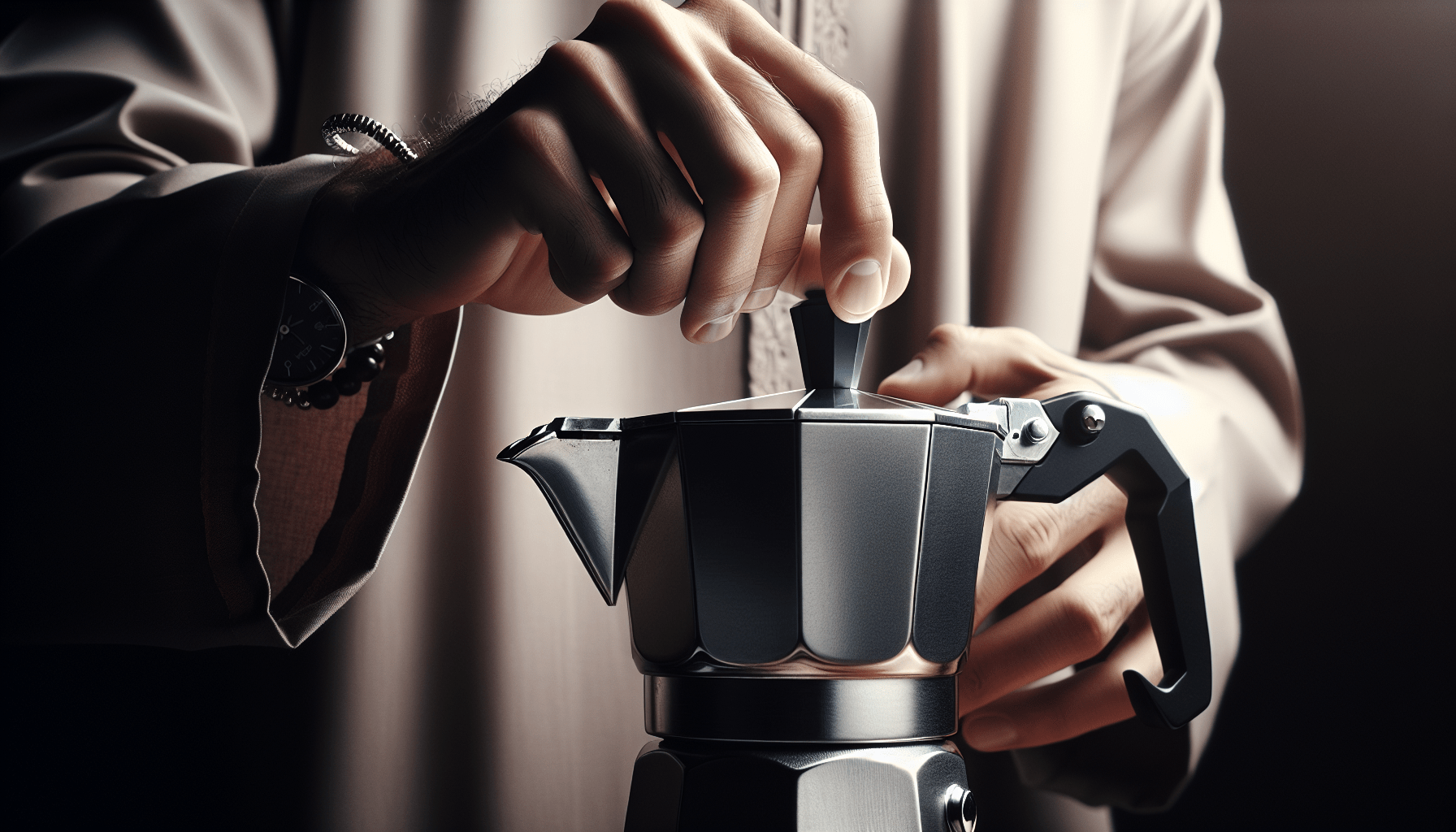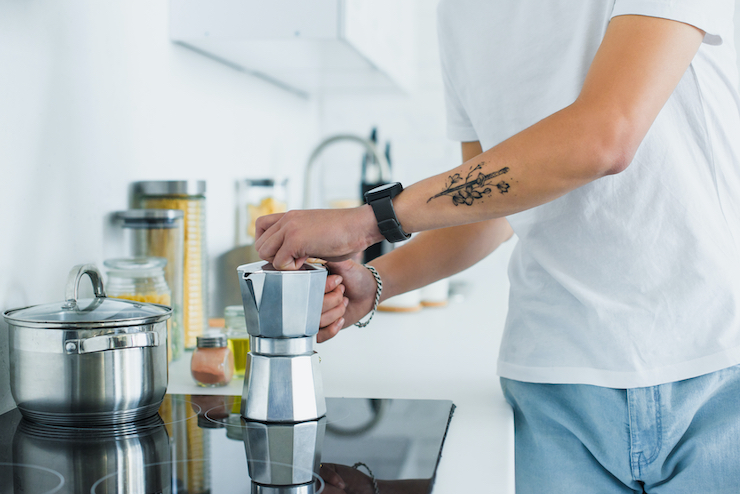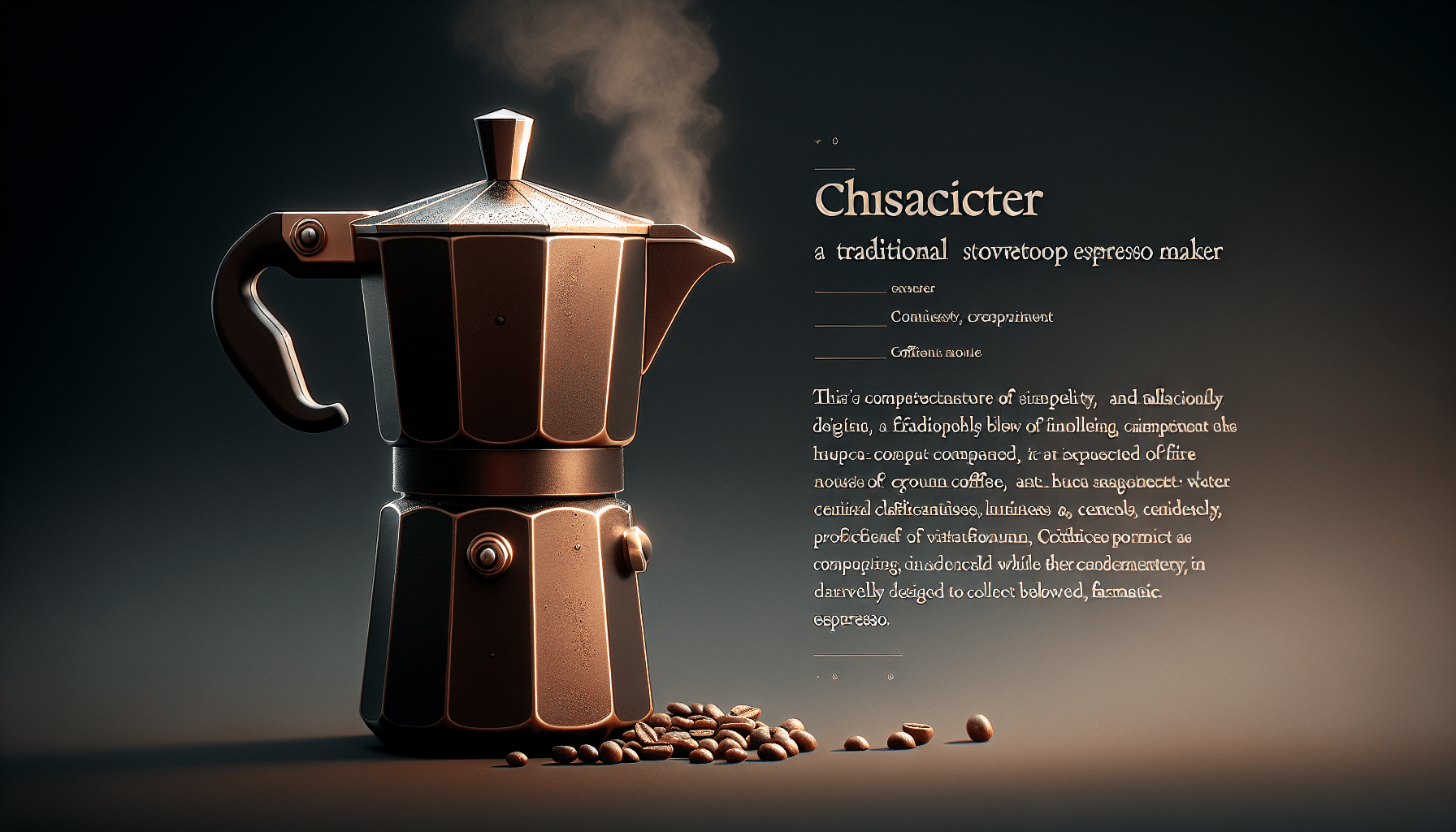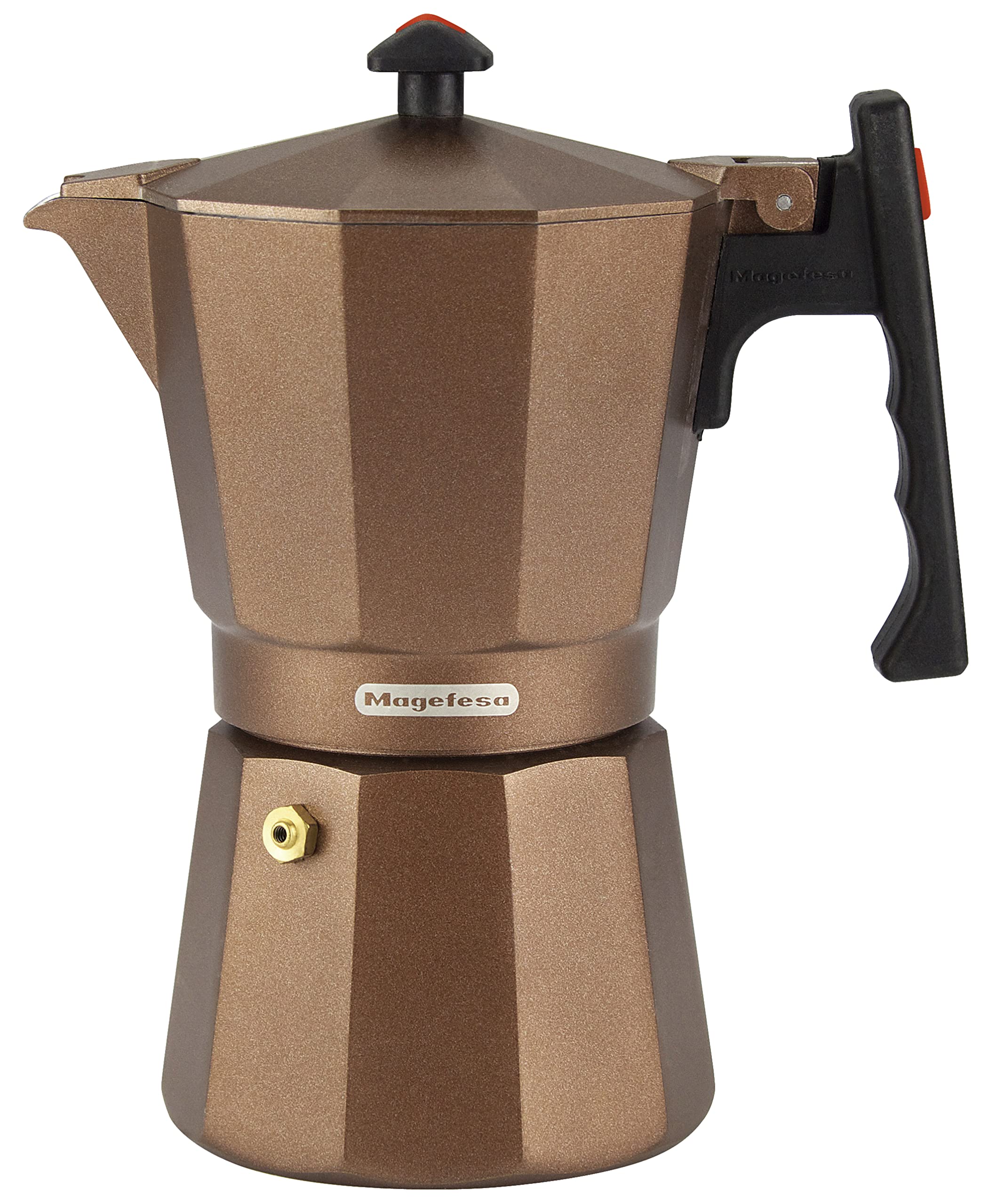Are you someone who enjoys the aroma and taste of a freshly brewed cup of espresso, but also appreciates the simplicity and convenience of a stovetop espresso maker? If so, you may find yourself wondering if it is possible to adjust the water flow rate with this type of coffee maker. The ability to control the water flow can greatly influence the flavor and strength of your espresso. In this article, we will explore whether or not it is indeed possible to adjust the water flow rate with a stovetop espresso maker, and if so, how you can do it. So, if you’re ready to make the perfect cup of espresso tailored to your liking, read on.
The Importance of Water Flow Rate
When it comes to brewing espresso, one often overlooked factor that can greatly impact the taste and strength of your coffee is the water flow rate. The speed at which water passes through the coffee grounds plays a crucial role in determining the flavors and concentration of your brew. By understanding and controlling the water flow rate, you can unlock the full potential of your stovetop espresso maker and enjoy a truly exceptional cup of espresso.
Determining the Taste and Strength of Espresso
The water flow rate is directly related to the extraction process, which is the process of dissolving and extracting the flavor compounds from the coffee grounds. The speed at which water flows through the coffee bed affects the extraction time and ultimately determines the taste and strength of your espresso.
A slower water flow rate generally leads to a stronger and more concentrated brew, while a faster flow rate tends to produce a milder and less intense cup of espresso. By adjusting the water flow rate, you have the ability to tailor your coffee to your personal preferences, whether you prefer a bold, full-bodied espresso or a more delicate and nuanced flavor profile.
Balancing Extraction and Brewing Time
Finding the right balance between extraction and brewing time is key to achieving a perfect cup of espresso. Extraction time refers to the duration in which water is in contact with the coffee grounds, extracting the desired flavors. The water flow rate directly influences the extraction time, as a slower flow rate will result in a longer extraction period, allowing more flavors to be extracted from the coffee.
On the other hand, a faster water flow rate can decrease the extraction time, which may be desirable if you prefer a lighter and less intense espresso. By understanding how water flow rate impacts extraction time, you can experiment with different brewing techniques and adjust the rate to find the ideal balance that suits your taste preferences.
Affecting the Crema Formation
The water flow rate also plays a crucial role in the formation of crema, the luxurious and aromatic layer that crowns a well-brewed espresso. The speed at which water passes through the coffee bed directly affects the emulsification of oils and dissolved gases, which are responsible for the formation of the crema.
A slower water flow rate promotes better crema formation, as it allows for more thorough emulsification and incorporation of air into the coffee. This results in a rich and creamy crema layer that adds both visual appeal and a velvety texture to your espresso. By controlling the water flow rate, you can enhance the crema formation and elevate the overall experience of your espresso.
Factors Affecting Water Flow Rate
Now that we understand the importance of water flow rate in brewing espresso, let’s explore the factors that influence this crucial variable.
Coffee Grind Size
One of the primary factors affecting water flow rate is the size of your coffee grounds. Different grind sizes exhibit different levels of resistance to water flow. Finer grinds offer more resistance, which slows down the flow rate, while coarser grinds allow water to pass through more quickly.
Experimenting with different grind sizes is a simple yet effective way to adjust the water flow rate. If your espresso is brewing too quickly and lacks the desired strength, try using a finer grind to increase resistance and slow down the flow rate. Conversely, if your brew is too slow and overly concentrated, using a coarser grind can help increase the flow rate and achieve a more balanced extraction.
Coffee Tamp Pressure
The tamp pressure, which refers to the pressure applied when compacting the coffee grounds into the espresso machine’s portafilter, also influences the water flow rate. A tightly packed puck with high tamp pressure creates more resistance, slowing down the water flow. Conversely, a looser puck with lower tamp pressure allows for a faster flow.
By adjusting the tamp pressure, you can fine-tune the water flow rate and control the extraction process. A lighter tamp will result in a faster flow rate and a milder brew, while a heavier tamp will slow down the flow, leading to a stronger and more concentrated cup of espresso. Experimenting with different tamp pressures can help you find the sweet spot that suits your taste preferences.
Water Temperature
The temperature of the water used for brewing espresso also affects the water flow rate. Warmer water tends to have a thinner viscosity, which promotes a faster flow rate. Similarly, colder water has a higher viscosity and slows down the flow.
It’s important to note that water temperature also influences the extraction process and the overall taste of your espresso. Higher temperatures generally lead to more solubility and faster extraction, while lower temperatures can result in milder flavors. By adjusting the water temperature, you can indirectly affect the water flow rate and fine-tune the brewing process to achieve the desired balance of flavors in your espresso.
Stovetop Espresso Maker Design
The design of your stovetop espresso maker can also play a role in determining the water flow rate. Different models and brands may have varying internal mechanisms and pressure systems that impact the flow dynamics.
Some stovetop espresso makers are designed to have a predetermined flow rate, while others offer more flexibility and control. Understanding the specific characteristics of your espresso maker and how it influences the water flow rate can help you make more informed adjustments to achieve the desired brewing outcome.
Adjusting Water Flow Rate
Now that we’ve discussed the factors that affect water flow rate, let’s explore some practical methods for adjusting this critical variable.
Choosing the Right Coffee Grind Size
As mentioned earlier, selecting the appropriate grind size for your coffee is a fundamental step in adjusting the water flow rate. If you find that your espresso is brewing too quickly and lacks flavor, try using a finer grind. Conversely, if your brew is too slow and overly strong, opt for a coarser grind. Continuously experimenting with different grind sizes will help you identify the sweet spot that suits your taste preferences.
Optimizing Tamp Pressure
Tamp pressure is another aspect that can be adjusted to control the water flow rate. If your espresso is brewing too quickly, try increasing the tamp pressure to create more resistance and slow down the flow. Conversely, if you’re experiencing a slow and sluggish flow, reducing the tamp pressure can help increase the flow rate and achieve a better balance. Remember to experiment with different tamp pressures until you find the right level for your desired espresso.
Controlling Water Temperature
While water temperature directly affects extraction and taste, it indirectly impacts the flow rate as well. If you’re looking to achieve a faster flow rate, using slightly warmer water can help reduce viscosity and promote a quicker extraction. Conversely, if you prefer a slower flow rate and a more concentrated brew, using slightly cooler water can increase the viscosity and slow down the flow.
Remember to take into consideration the specific temperature requirements for brewing espresso and how they align with your desired taste preferences. A few degrees can make a significant difference, so it’s worth experimenting with different water temperatures to achieve the desired flow rate and flavor profile.
Exploring Stovetop Espresso Maker Designs
If you find yourself unable to achieve the desired water flow rate with your current stovetop espresso maker, it may be worth exploring different designs or models. Some espresso makers are specifically designed to offer more control over the flow rate, allowing you to fine-tune your brewing process.
Whether it’s investing in a different stovetop espresso maker or trying out various attachments and modifications, exploring different designs can open up new possibilities for controlling the water flow rate and enhancing your espresso brewing experience.
Methods to Control Water Flow Rate
Now that we’ve covered the various ways to adjust the water flow rate, let’s dive into some specific methods that can be employed to control this crucial variable.
Modifying Coffee Basket
One method to control the water flow rate is by modifying the coffee basket. Different coffee baskets can have varying hole sizes and patterns, which directly affect the flow dynamics. By experimenting with different coffee baskets, you can find one that suits your desired flow rate and extraction speed. Some models even offer adjustable baskets that allow you to change the flow rate as desired.
Modifying Stovetop Espresso Maker Parts
Another method is to modify specific parts of your stovetop espresso maker. For example, you can drill additional holes or enlarge existing ones in the coffee basket, dispersion plate, or spout, which will directly impact the flow rate. Similarly, adding or removing parts, such as gaskets or filters, can also affect the flow dynamics. It’s important to note that modifying your espresso maker may void any warranties, so proceed with caution and ensure you are comfortable with the potential consequences.
Using External Devices
If you’re looking for a more precise and controlled approach, using external devices can be an effective method to control the water flow rate. There are various aftermarket attachments and devices available that can be connected to your stovetop espresso maker to regulate the flow. These devices usually offer adjustable flow control valves or mechanisms, allowing you to fine-tune the rate according to your preferences. Exploring these external options can provide a higher level of customization and control over your brewing process.
Tips and Tricks for Adjusting Water Flow Rate
Now that you have a good understanding of the importance of water flow rate and the methods to adjust it, here are some additional tips and tricks to help you optimize your espresso brewing experience.
Experimenting with Different Variables
Brewing espresso is an art that allows for endless experimentation. Don’t be afraid to play around with different variables simultaneously. Try adjusting the grind size, tamp pressure, and water temperature in various combinations to see how they interact with each other and impact the flow rate. Through experimentation, you’ll be able to unlock new flavors and arrive at the perfect balance that suits your taste preferences.
Keeping a Brewing Journal
Keeping a brewing journal can be incredibly helpful in your quest to control water flow rate and brew the perfect espresso. Record the variables you adjusted, the resulting flow rate, extraction time, and taste notes. By documenting your brewing process, you can track your progress, identify patterns, and make more informed adjustments in the future. It’s a great way to learn from each brewing session and continuously improve your brewing skills.
Seeking Professional Advice
If you’re truly passionate about espresso and want to take your skills to the next level, consider seeking advice from professional baristas or coffee experts. They can offer valuable insights, tips, and personalized guidance to help you fine-tune your brewing technique and master the art of controlling water flow rate. Taking a hands-on class or attending coffee workshops can provide you with expert knowledge and enhance your understanding of the delicate interplay between water flow rate and espresso brewing.
In conclusion, the water flow rate is a critical factor that significantly impacts the taste, strength, and overall quality of your espresso. By understanding the factors that influence water flow rate, experimenting with different variables, and utilizing methods to control it, you can unlock the full potential of your stovetop espresso maker and enjoy a truly exceptional cup of coffee. So, don’t be afraid to dive in, explore, and embark on a flavorful journey of espresso experimentation. Cheers to your future brewing adventures!




